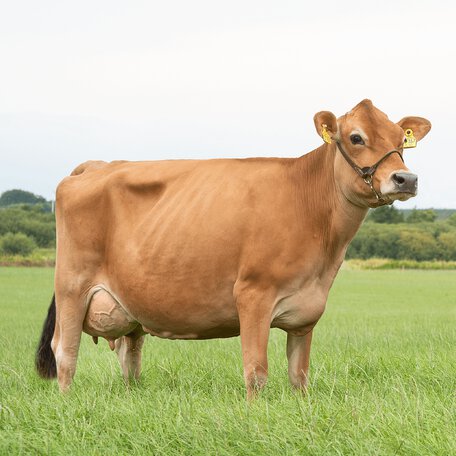The use of sexed semen is becoming increasingly popular, and an even more rapid growth in the adoption of sexed semen is being observed among Jersey breeders around the world.
The sexed semen era for Jersey breeders in the Nordic countries started back in 2004, when the bulls Q Impuls and Q Zik were sent to the Cogent bull station in the United Kingdom. Here they produced sexed semen at the first sexing laboratory in Europe.
Already at that time the aim was to reduce the number of pure-bred Jersey bull calves, which was negatively affecting the profitability of the Jersey herds, and avoid culling newborn calves.
Q Impuls was the first Jersey bull to be marketed with sexed semen on the global market.
From 2006, a sexing lab was set up in Denmark and production of sexed semen from VikingJersey bulls continued there.
Full acceptance of sexed semen among Jersey breeders
In the Nordic countries, Jersey breeders have extensively adapted sexed semen strategies to increase genetic progress and avoid purebred Jersey bull calves. In March 2021, the use of sexed semen on Jerseys reached 72% of all dairy doses and it is expected that nearly all Jersey doses will be sexed by the end of the year.
The growing popularity of sexed semen is also observed in other countries, where our Jersey breeding program partners operate. In Norway, 99% of the total sales of VikingJersey semen is sexed, in France 57% and in the United Kingdom 50%.
99% sexed semen is the highest ratio of sexed semen used in a National Jersey population worldwide. These numbers reflect the Norwegian Jersey breeder’s active decision to use only sexed Jersey semen to breed a superior next generation.
“They are following a profitable and progressive breeding strategy to speed up genetic trends and to breed surplus heifers to expand the Jersey population in Norway”, explains Peter Larson, Product & Breeding manager for VikingJersey.



